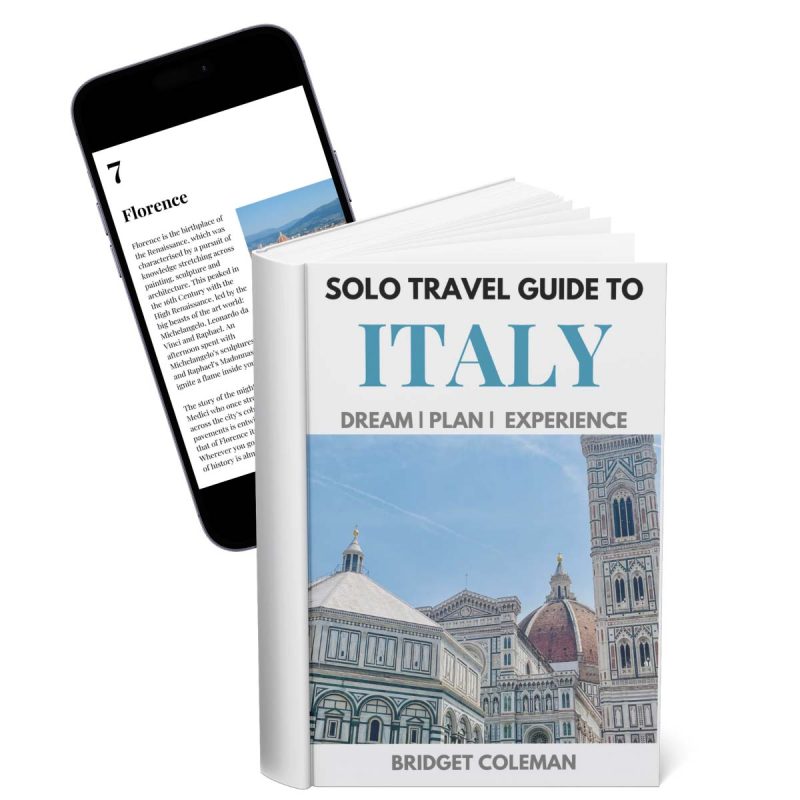Even if you have only a passing interest in art, don’t miss visiting the Scrovegni Chapel in Padua (Cappella degli Scrovegni). I have been twice and would return in a heartbeat.
Also known as the Arena Chapel (Madonna dell’Arena), it is famous for its remarkable frescos painted by the celebrated artist Giotto di Bondone. It’s a sneak preview of the Renaissance before it took off and was UNESCO-listed in 2021.
As you can visit Padua on a day trip by train from Verona or Venice, it’s an easy addition to your Italy itinerary. However, if you arrive at the chapel intending to spend a leisurely hour gazing at these medieval paintings, you’ll be disappointed.
This is one place where you need to plan ahead.
Don’t miss out. Get the lowdown on the chapel and Giotto’s unmissable masterpieces, including how the visit works, how to buy tickets for the Scrovegni Chapel and insider tips.

A Short History of the Scrovegni Chapel
Enrico Scrovegni built the Scrovegni chapel in 1303 to expunge the sins of his father. It once stood next to the family residence which was torn down in 1824.
Reginaldo degli Scrovegni was a medieval money-lender who levied stratospheric interest rates at a time when the Church forbade this practice. This didn’t escape the attention of Dante who placed him in the seventh ring of hell in his Divine Comedy.
Reginaldo was denied a Christian burial and Enrico built the Scrovegni Chapel to save his father’s soul. After seeing Giotto’s work in Assisi, he knew he had found his interior decorator.
Giotto and his assistants painted the chapel in 200 working days between 1303 and 1305.
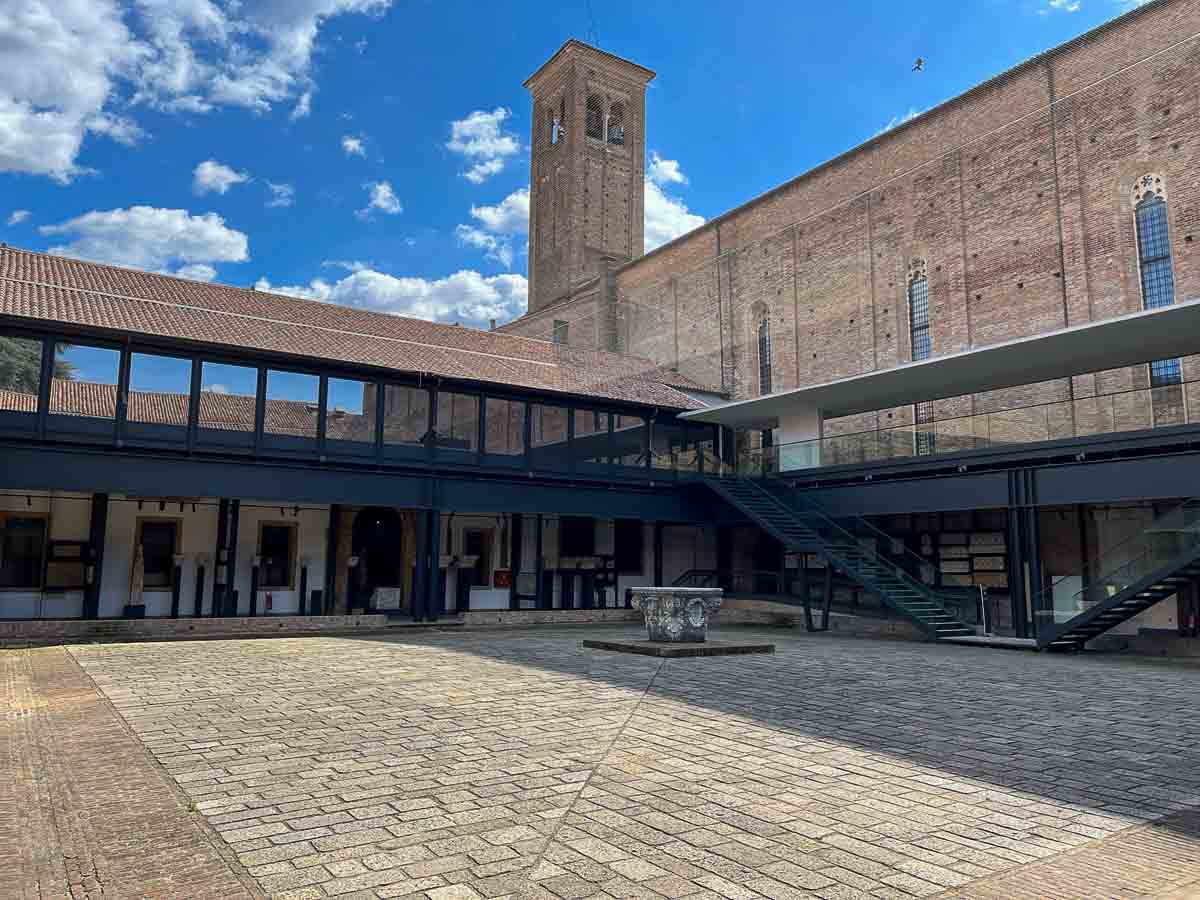
I’VE WRITTEN THIS ITALY SOLO TRAVEL GUIDE!
A 100+ page ebook to inspire and equip solo travellers with the confidence and knowledge to explore Italy independently
- Plan Your Trip – with curated itineraries, budgeting and how to get around
- Explore Awesome Destinations – guides to the must-see cities of Rome, Florence, Venice and Naples
- Stay Safe as a Solo Traveller – practical safety advice, empowering you to confidently navigate Italy and avoid common pitfalls
- Enjoy Eating Out in Italy – essential tried-and-tested solo dining tips
Cappella degli Scrovegni is a Masterwork of Medieval Art
An embodiment of the cultural and religious life of its era, it is considered by many to be the first work of modern art.
Bursting with light and colour and charged with emotion, Giotto’s frescos were radical for their time. They marked the transition from the flat, symbolic style of the Middle Ages to a more realistic and three-dimensional portrayal of human figures and stories.
But the Scrovegni Chapel’s importance extends beyond its artistic merit. It also provides valuable insights into the religious fervour, the patrons who supported the chapel and the advancements in architecture and art during that time.
The Artist Behind the Masterpiece: Giotto di Bondone
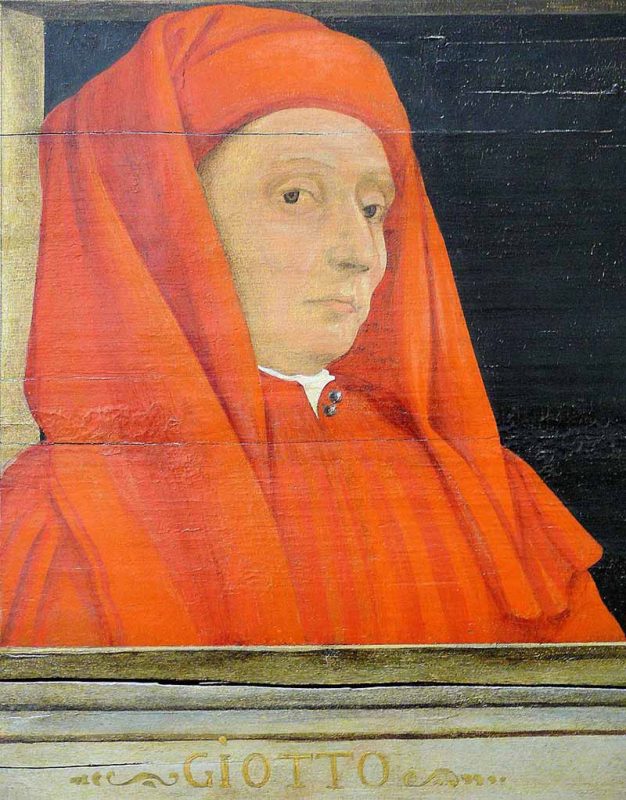
Giotto di Bondone, commonly known as Giotto, was an Italian painter and architect who lived during the late 13th and early 14th Centuries. He is widely recognized as one of the most important and influential artists of the Italian Renaissance.
His groundbreaking work cannot be overstated.
Gilded iconography was so 13th Century. In its place, he painted figures expressing the range of human emotions, from sorrow to joy, wonder to introspection.
Giotto had a profound influence on several generations of artists who came after him. These include Masaccio, one of the earlier pioneers of linear perspective and naturalism, Fra Angelico, Leonardo da Vinci and Michelangelo.
What to Expect from Your Visit
Standard tickets for the Crovegni Chapel are for a timed entry slot. When it’s your turn, you’ll be led into an air-conditioned waiting room where you’ll stay for the next 15 minutes. Giotto’s frescos are precious and fragile and this process stabilises the environment within the chapel.
During this time, you’ll watch an interesting video about the Scrovegni Chapel and its preservation.
When the doors open, you’ll enter the chapel and the clock starts ticking.
You only get about 15 minutes to see the frescos so make every minute count. As a maximum of 25 people are allowed in at any time, the chapel does not feel uncomfortably crowded.
Private photography is allowed in the Scrovegni Chapel but turn off your flash and leave the tripod and selfie stick at home.
Guided tours of the Scrovegni Chapel are not permitted
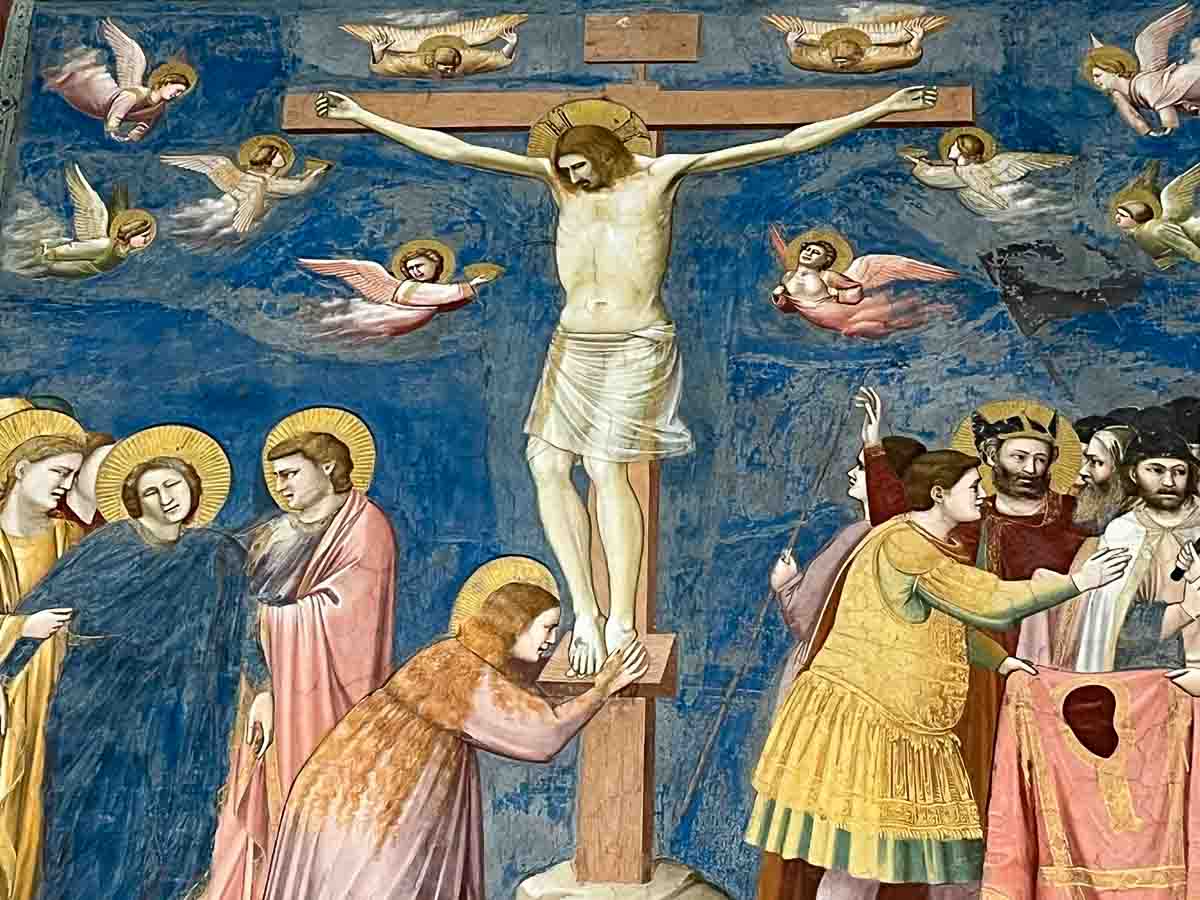
Giotto Frescos in the Scrovegni Chapel
Sculpted with light and colour, Giotto’s frescos in the Scrovegni Chapel chronicle the life and teachings of Jesus Christ. Over the chapel’s 38 panels, you are immersed in a three-generational history: that of Jesus, the Virgin Mary and Mary’s parents.
These paintings are arranged in three horizontal tiers and are read like a comic strip.
Weaving this narrative through pictures rather than words was important at the time Giotto painted the chapel. Most of the population of Europe was illiterate and were not able to read the Bible for themselves.
The story of Mary’s parents, Joachim and Ann, occupies the upper register. Scenes from the life of Mary are in the middle register.
But most of the chapel’s real estate is occupied by scenes from the life of Christ. These run along the lower halves of the chapel’s side walls in two superimposed tiers.
This continuous narrative edges towards to the climactic final scene, Giotto’s Last Judgement, on the rear wall of the chapel.
Between the panels are trompe-l’œil paintings of the seven virtues and seven vices, intended to resemble inlaid marble. On the painted ceiling is a star-studded deep blue sky with images of Jesus, Mary and the Prophets.
Stepping into this space can be overwhelming so let’s focus on a few key frescos and their meanings.
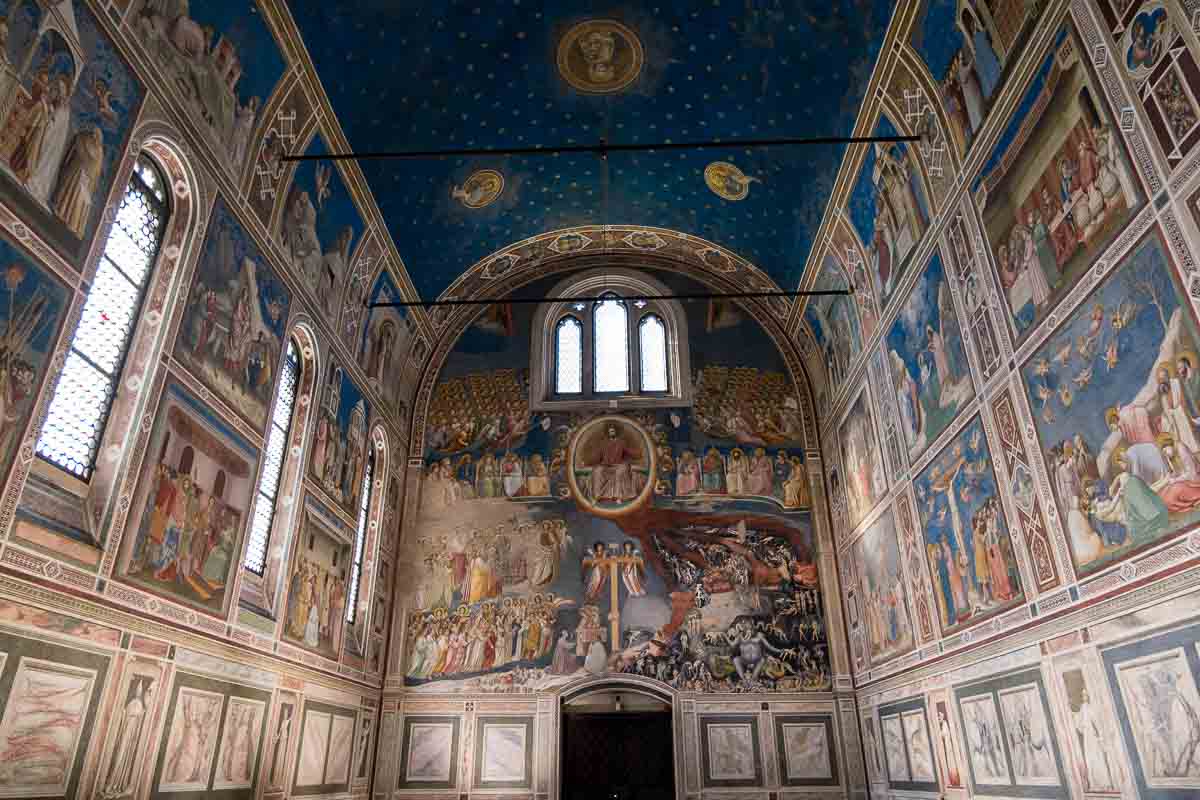
The Life of Mary
Mary’s story starts with that of her parents, Joachim and Ann, in the upper left-hand corner of the chapel as you face the Last Judgement.
Joachim is booted out of the temple for the sin of being childless. After returning to his sheep farm, he hears the miraculous news that Ann is to have a child.
Under the arch of Jerusalem’s Golden Gate, Joachim and Anna come together in a warm embrace. You can’t help but feel happy for them.
The narrative continues with the Birth of the Virgin Mary, her presentation in the temple to potential suitors and concludes with the Annunciation.
The Life of Christ
The frescos that depict episodes from the life of Jesus are a visual journey through the core of the Christian faith. From the Nativity to the Crucifixion, Resurrection and Ascension into heaven, these paintings emphasise his teachings, miracles and the ultimate sacrifice that defines Christian belief.
Scenes from the early life of Christ include him astounding the scholars and holy men in the temple, his baptism by John the Baptist, the miracle at the Feast of Cana and the raising of Lazarus from the dead.
Moving onto his Passion, we see Jesus’s triumphant entry into Jerusalem, riding on a donkey while crowds wave palm branches and lay their cloaks on the road before him. Giotto’s portrayal captures the adoration and hope of the people as they welcome Jesus as a messianic figure.
In Giotto’s Last Supper scenes, Jesus shares a meal with his disciples and humbly washes their feet.
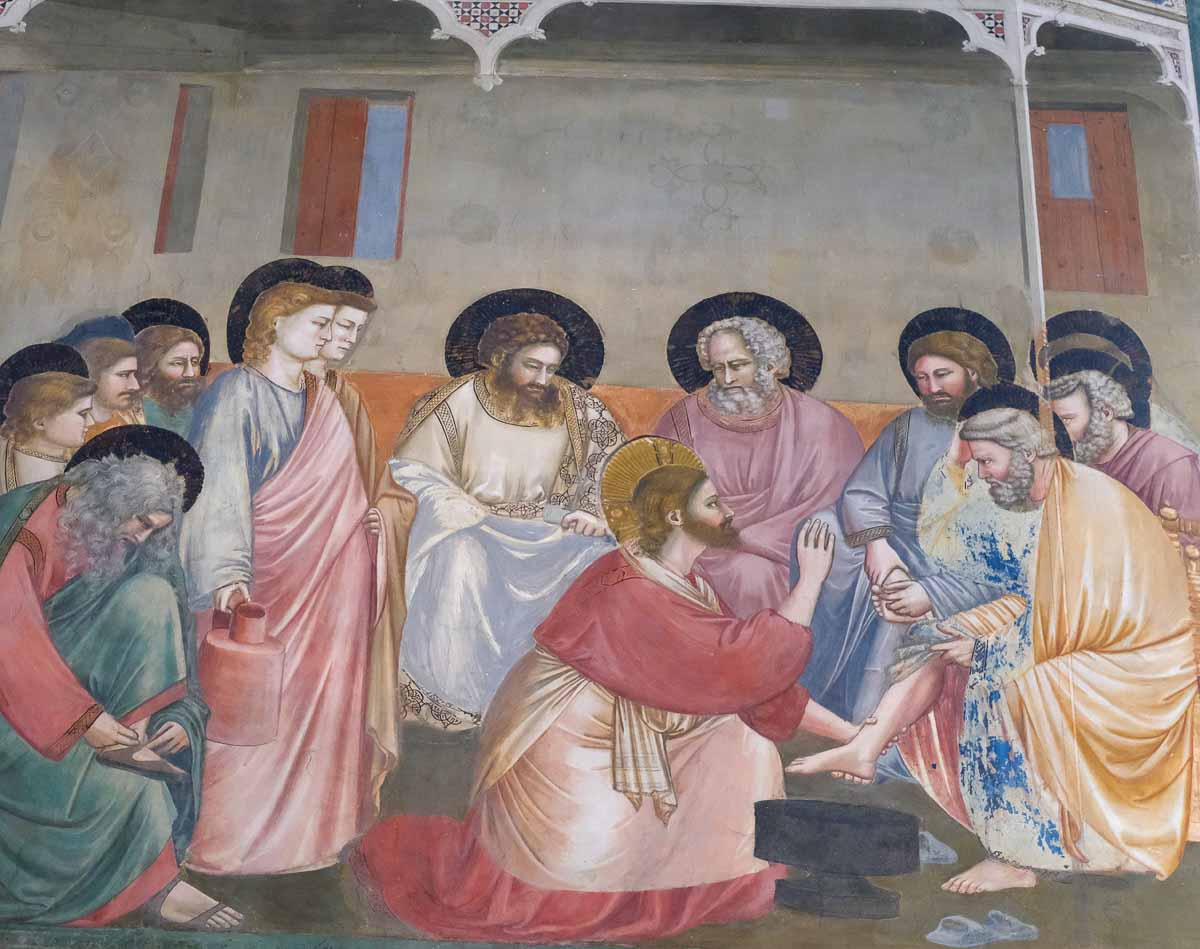
The Kiss of Judas or Arrest of Christ is my favourite painting in the Scrovegni Chapel.
Swathed in a yellow cloak, the colour of envy, Judas betrays Jesus by wrapping his arms around him. Just look at the sad yet resigned expression on Jesus’s face.
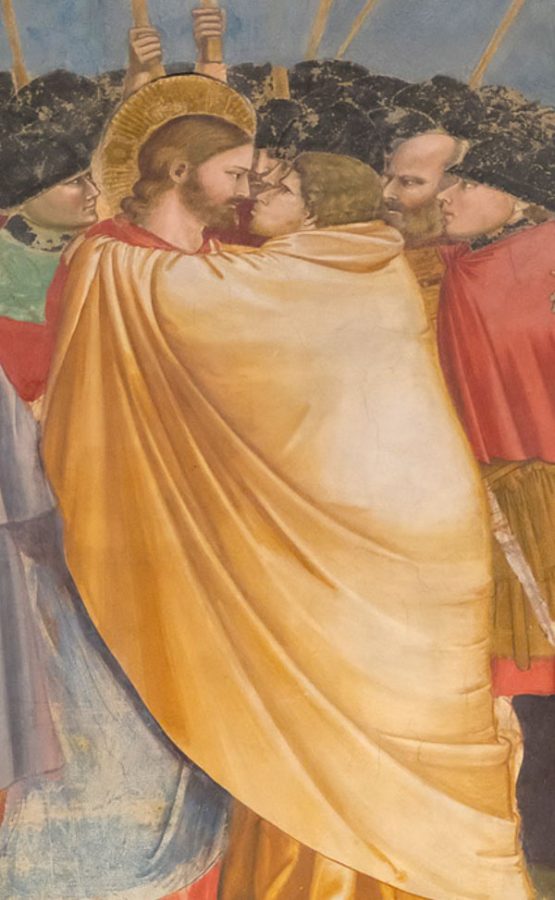
Considered to be Giotto’s best painting in the Scrovegni Chapel, The Lamentation captures the moments following Christ’s deposition from the cross.
As Mary cradles her dead son, her grief is almost palpable. The shrieks of anguish from John the Baptist are echoed in those of the angels above. Giotto is a master at conveying the human and emotional aspects of this moment.
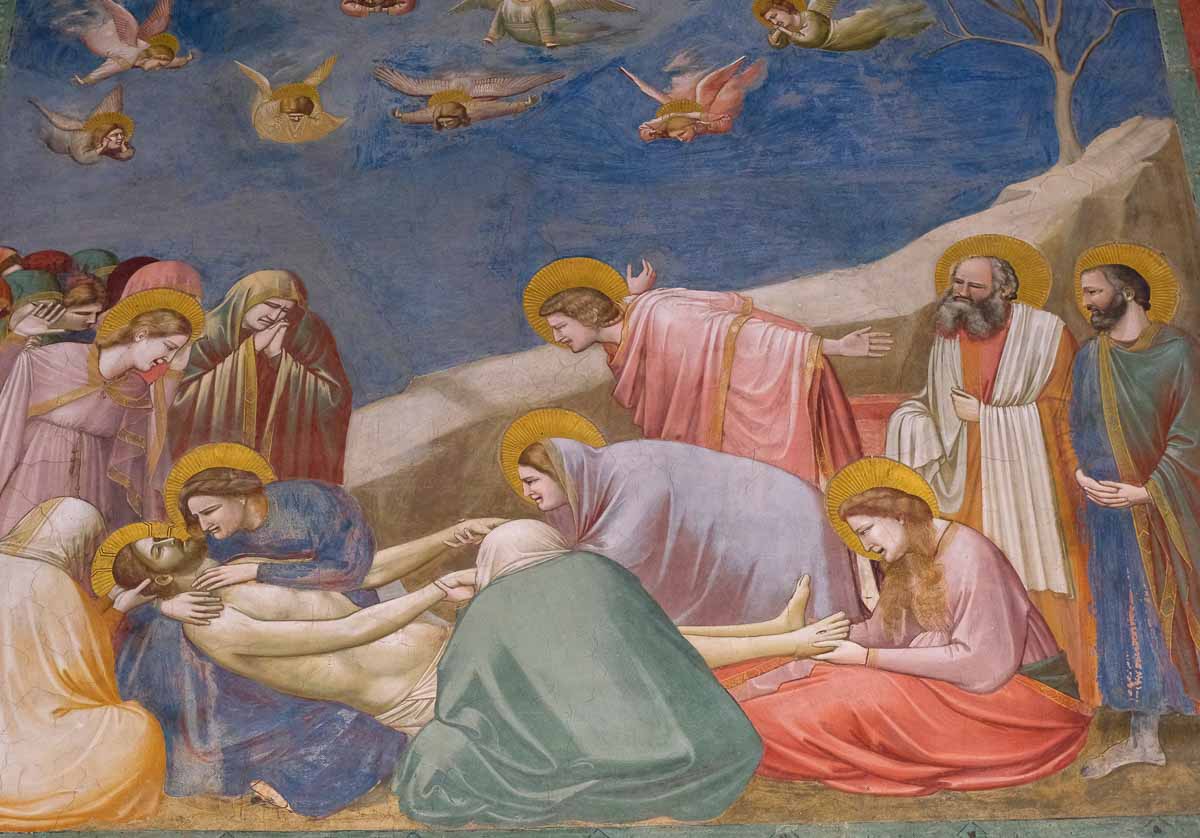
The Resurrection symbolises the victory of life over death, a cornerstone of the Christian faith.
Mary reaches out to the risen Christ who is almost backing out of the frame. It may look like he’s trying to scarper but hope is restored.
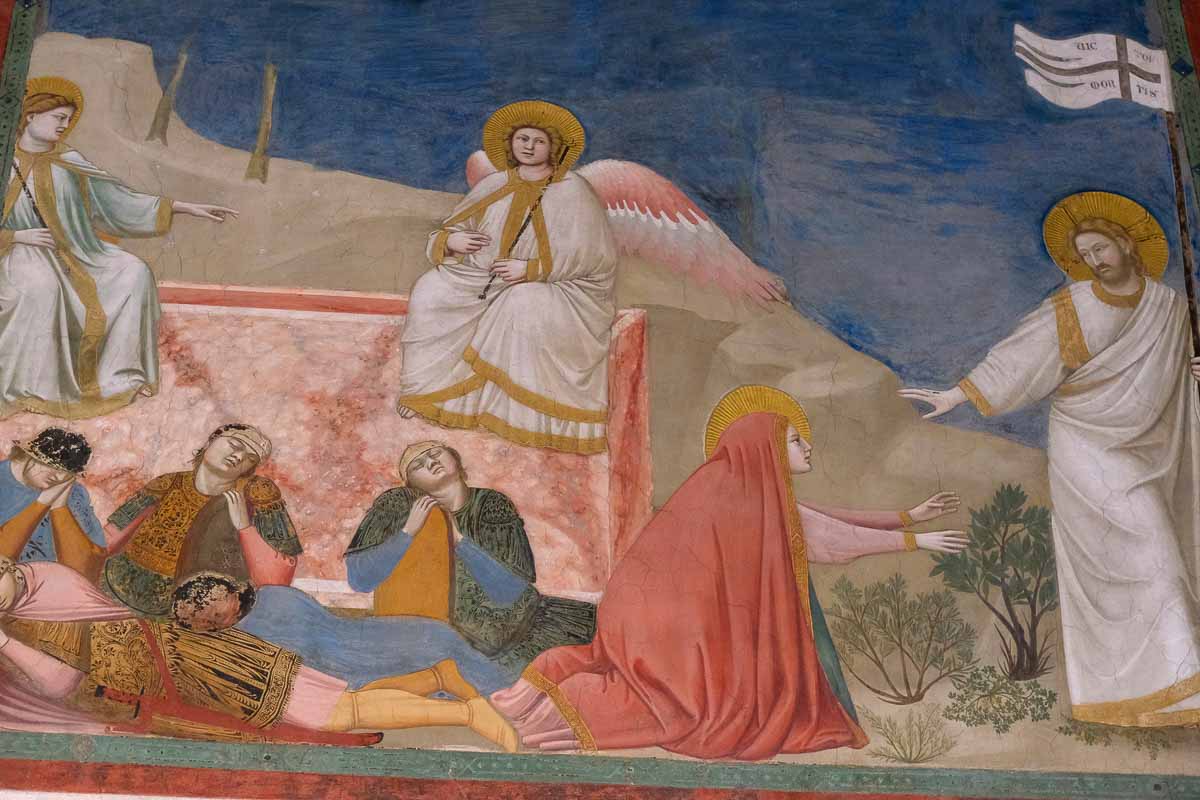
Giotto captures the moment of Jesus’s ascension in a spiritually charged and dynamic composition. Beneath him the apostles gaze up at him, shielding their eyes from the dazzling light.
Giotto’s Last Judgement
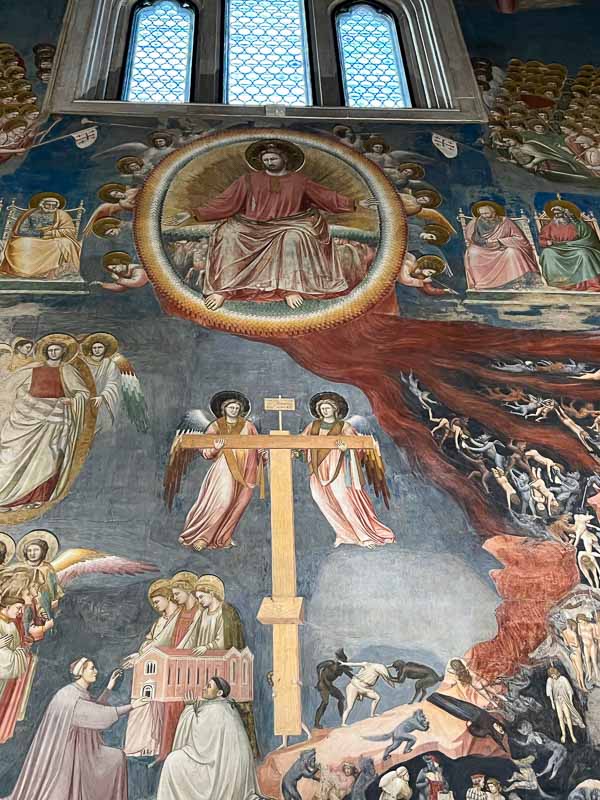
Positioned behind the chapel’s altar, Giotto’s Last Judgment is a striking depiction of the final judgment of souls. It is both hopeful and terrifying.
It was intended as a powerful reminder of the consequences of one’s actions and the promise of redemption through faith.
In the centre, the majestic figure of Christ separates the blessed from the damned. He alone can judge humanity.
Flanking Christ are the Virgin Mary and St. John the Baptist. They are interceding on behalf of the saved, pleading for their souls.
On Christ’s right-hand side (on our left as we view the painting), the saved rise from their graves ready to be escorted into heaven by angels. But the real action is in hell
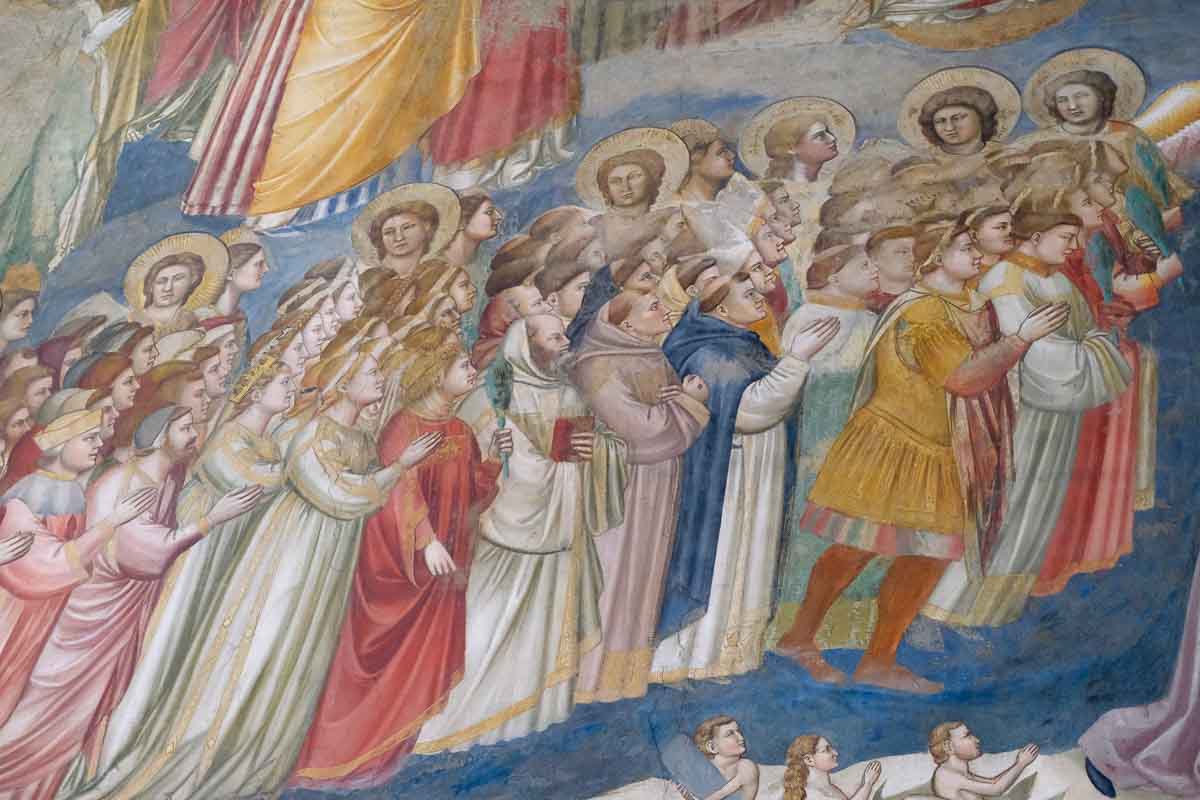
Lucifer is depicted as a Minotaur-headed ogre munching on sinners. Money lenders with bags of swag swing from nooses. A disgraced Judas hangs below them.
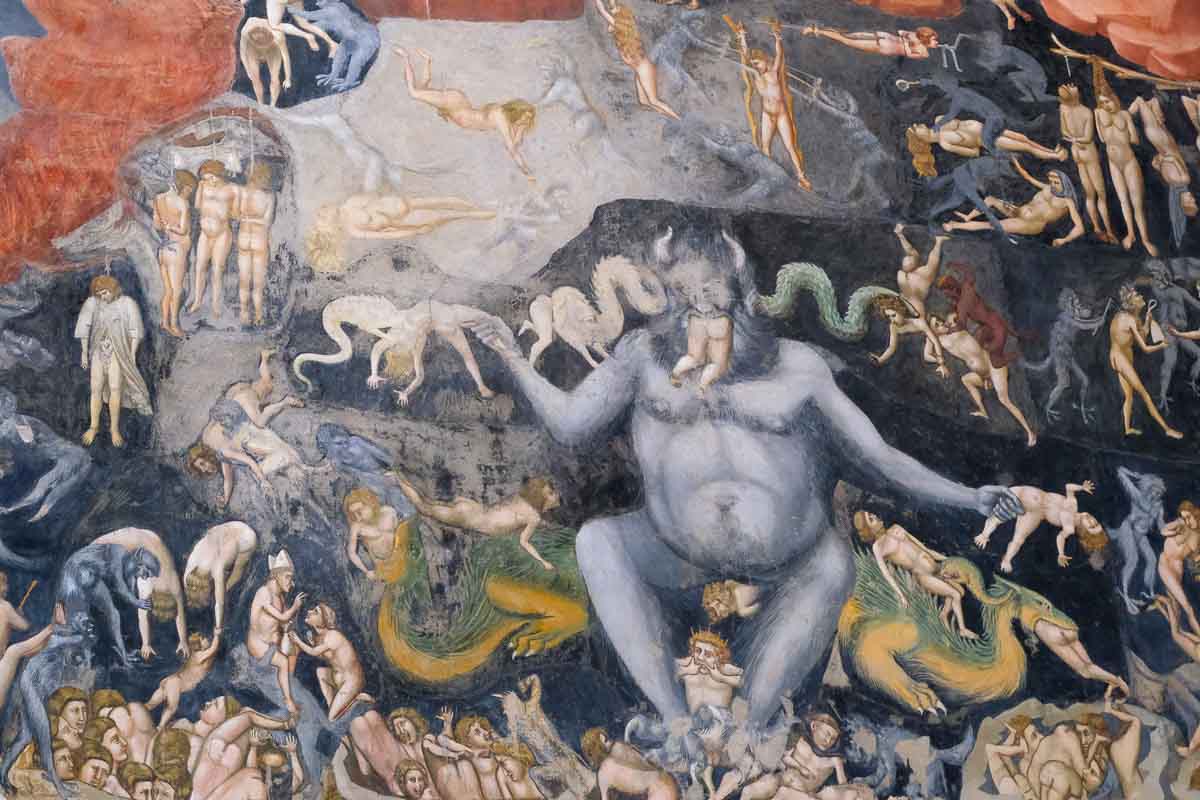
The Virtues and Vices
At the dado level on each side of the chapel, you’ll see 14 vertical paintings that look like marble sculptures in niches. These represent the virtues and the vices according to medieval Christian theology.
There are the three theological virtues of faith, hope and charity, and the four cardinal virtues of justice, prudence, fortitude and temperance. Justice uses weighing scales to balance right and wrong, Faith carries a cross and Charity has a basket overflowing with goodies.
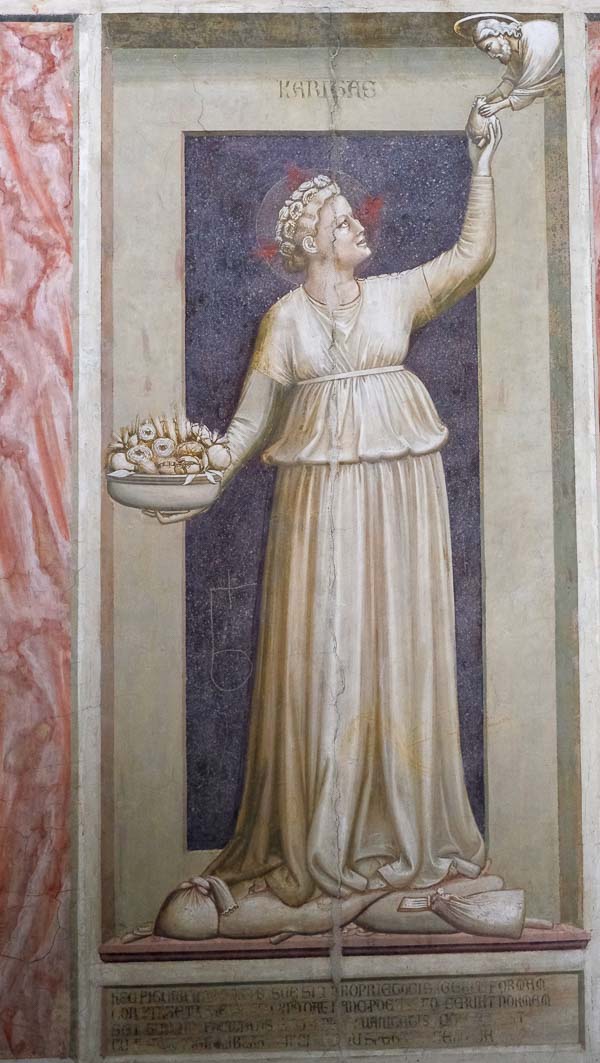
These virtues face off the seven vices across the chapel’s floor. Inconstancy slides down a slippery slope whilst Foolishness is dressed as a court jester.
How to Visit the Scrovegni Chapel: Practical Information
Getting there
Address: Piazza Eremitani, 8, 35121 Padova PD, Italy
Padua is well-connected by frequent train services to major cities like Venice, Verona and Milan.
From Padua Railway Station (Padova Stazione Ferroviaria), it’s a pleasant 10-15-minute to the Scrovegni Chapel. If you prefer, several city buses serve the chapel. Alight at the “Cappella degli Scrovegni” stop.
Opening hours
Cappella degli Scrovegni is open year-round from 9 am until 7 pm. However, Palazzo Zuckermann, also included in your ticket, is closed on Mondays (except public holidays) and December 25th and 26th.
The Scrovegni Chapel is also open from 7 pm until 9.20 pm (last entry) from 25th March until the end of November and from 27th December until 6th January (except for 31st December and 1st January).
Buying tickets
Listen up. This is important.
You must buy your Scrovegni Chapel ticket in advance. Same-day reservations cannot be made.
Buy them online here. All tickets are non-refundable and include the entrance to the Eremitani Museum and the Zuckermann Palace.
This is not a mobile ticket. You need to collect your ticket from the ticket office at the entrance of the Eremitani Museum, 100 metres from the Scrovegni Chapel.
Once you have collected your ticket, you should make your way to the entrance of the Scrovegni Chapel. Make sure that you are there at least five before the visit time printed on your ticket. Late visitors are not admitted into the Chapel.
Entry to the Scrovegni Chapel is included in the Urbs Picta Card. You will book your time slot at the Scrovegni Chapel at the same time as buying your card.
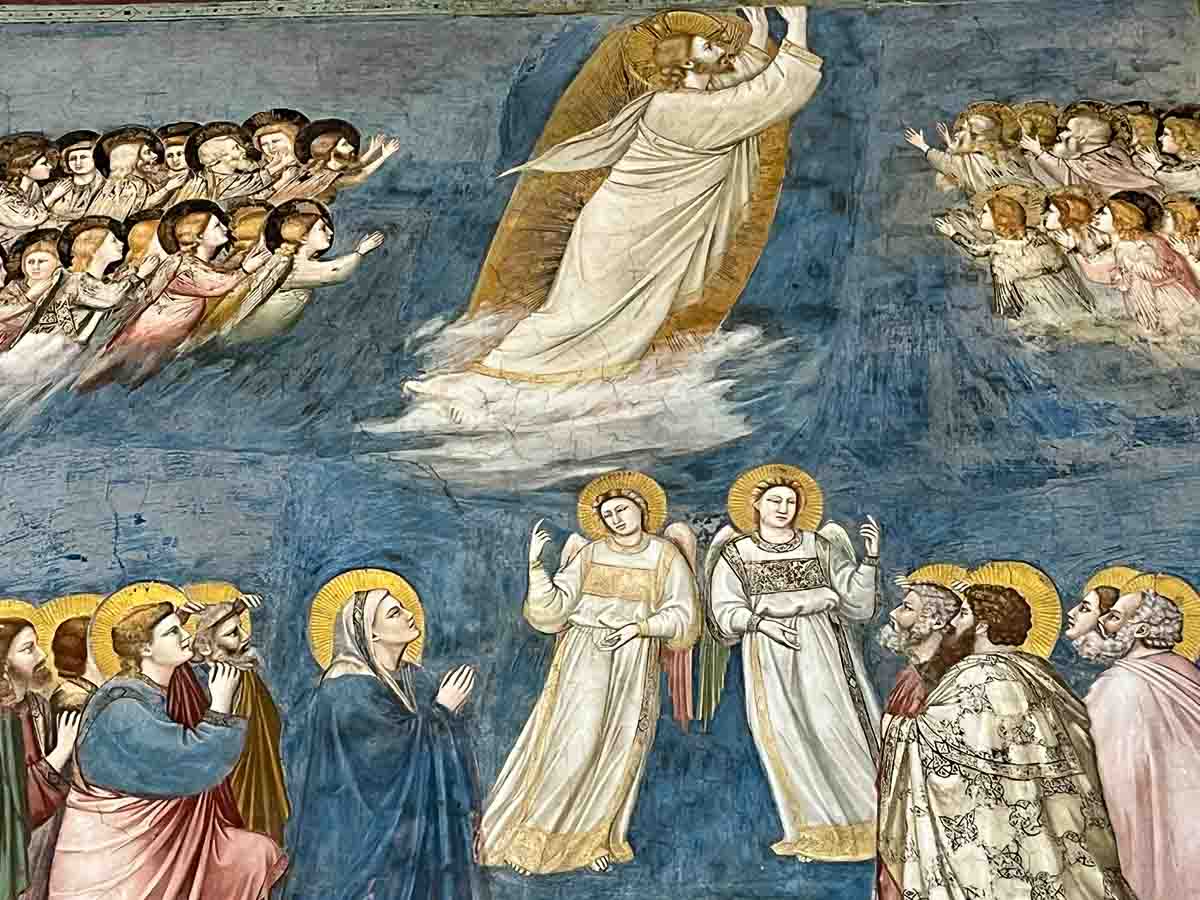
Where to next?
The Scrovegni Chapel’s frescos are a testament to the enduring power of art to inspire and connect with people across centuries. This is not merely something to tick off your artistic bucket list; it’s an intensely emotional experience.
Giotto’s frescos transport you into the heart of biblical stories. This forges a connection that transcends time and place, regardless of whether you are religious or not.
His ability to depict human emotions and expressions is nothing short of miraculous. Giotto’s mastery of light, shadow and perspective creates an almost cinematic quality in his frescos.
But his is not the only show in town. Take a look at my recommendations for what to do in Padua to make the most of your day.
If you are visiting other Italian cities, you may enjoy some of my other guides to art in Italy:
- 20 Famous Sculptures in Florence That You Must See
- Renaissance Art in Florence: 30 Famous Paintings You Cannot Miss
- 11 Places to Find the Art of Michelangelo in Florence, Italy

About Bridget
Bridget Coleman is a passionate art lover and has been travelling the globe for more than 30 years. She has visited 70+ countries, most as a solo traveller.
Articles on this site reflect her first-hand experiences.
To get in touch, email her at hello@theflashpacker.net or follow her on social media.

